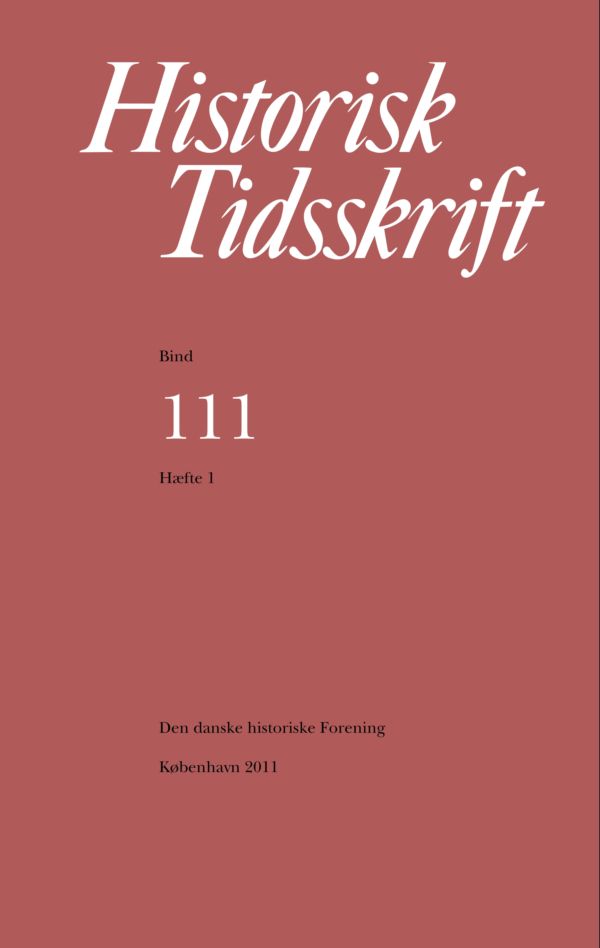Da Statens Arkiver blev effektive
Resumé
Streamlining the State ArchivesAppraisal and transfer of records – in other words: the complementary processes of preserving and scrapping archival material – did not become a real issue until the nineteen sixties, when the growth of public archives accelerated on an unprecedented scale. In health service institutions – specifically: hospitals – case files became increasingly difficult to store, and the director of the Danish State Archives appointed several committees who successively drafted guidelines on how to proceed. However, it proved difficult to establish consensus, let alone implement anything in practice. At the root of this lay the fact that medical case files are very important for research purposes. As time went on, the mood shifted from seeing hospital case records as a unique archival group to a more standardizing approach: all records that were structurally uniform, but concerned individual cases, ought to be handled according to the same principles. In 1993, a paradigm shift took place in the State Archives. Following the introduction of a new system of appropriations based on so-called result contracts between the Ministry of Culture and the State Archives, the appraisal strategy changed. The erstwhile focus on how to consolidate material kept in registries for best possible future use tended to wane. Instead, clearly specified targets came to the fore, an important one being the scrapping rate. It ought to be as high as possible within the limits of the overall purpose: to preserve the historical and cultural heritage embodied in records – and, concurrently, to dispose of all material that was not required for that purpose. Results were not long in coming. In 1996, the first actual regulation regarding hospital records became effective. The share of case files to be preserved was set on a level deemed insufficient during the deliberations of earlier years. The same approach dominated new instructions issued in 2003; on that occasion, the rules on hospital files were actually tightened a bit more. In spite of frequent invocations of economic necessity, this consideration did not per se determine appraisal policy. Rather, it was the principle of quantified target setting that raised the scrapping rate. The demand for a firm hand and consequent administration was essential. Monetary savings was an extra benefit – most welcome indeed, but not a necessary point of departure. It proved forceful as an argument, though, silencing even persistent critics who confronted management with the problems high scrapping rates would incur. Two major problems haunt the way hospital case records are currently preserved. First, selection criteria are not sufficiently variegated; secondly, archives from individual institutions are so severely reduced that researchers find themselves more or less obliged to perform nationwide studies – instead of being able to rely on local sources – in order to establish representative, unbiased dataset. The chosen procedure of random selection is by itself all-right, but is carried out too uniformly in method and too fragmentarily in scope, without due consideration of the need for covering special types of cases that may be important even though they do not occur very frequently. External political pressure for measurable results activated a mechanism of changing attitudes and approaches towards medical case files. The Danish State Archives may not actually overstep the bounds of what is defensible in order to secure adequate material for future research, but the path followed is so close to the brink that a debate about the question is justified.Downloads
Publiceret
Citation/Eksport
Nummer
Sektion
Licens
Ophavsret til bidrag i Historisk Tidsskrift tilhører forfatterne og Den danske historiske Forening som udgiver af Historisk Tidsskrift. For illustrationer gælder den ophavsret, som står anført i billedteksten. Ophavsretslovens almindelige bestemmelser gælder, hvilket vil sige, at ophavsretten gælder i 70 år efter forfatterens død. Bidrag i Historisk Tidsskrift må derfor, med forbehold for en ”moving wall” på tre år, frit downloades, læses, gemmes, anvendes og citeres (med kildeangivelse) i privat og videnskabelig sammenhæng, men de må ikke helt eller delvis genudgives af tredjepart, heller ikke i redigeret form, uden tilladelse fra forfatterne og Den danske historiske Forening. Henvendelse skal i så fald rettes til Historisk Tidsskrifts redaktion på histtid@hum.ku.dk.





